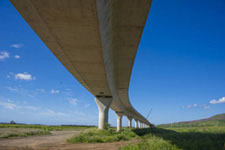News
Viewing Posts in Media
 |
|
Top 10 Hotel Lobbies in Modern Luxury Hawaii includes Koa Kea Hotel & Resort.Koa Kea Hotel & Resort is listed in Modern Luxury Hawaii's Top 10 Hotel Lobbies. Click here to see more. |
 |
|
|
January 2018 | Categories: Media
Welcome Aboard Hale MokuRead about Hale Moku in the current issue of HiLuxury. |
 |
|
PVA Honored as Finalist in Best of Hawaii Home + Remodeling Architecture CategoryPVA has been selected as a Finalist in the Best of Hawaii Home + Remodel - Architects Category. The list features Hawaii's top companies - as chosen by readers - for turning their dream home into a reality. The full list is featured here. |
 |
|
|
April 2017 | Categories: Media
Bring rail to street level from Middle Street to Downtown - Honolulu Star-Advertiser 4/27/17Editorial featured in the Honolulu Star-Advertiser 4/27/17 by Peter Vincent and Scott Wilson At first glance the public poll published by the Star-Advertiser on April 16 (“Finish rail but don’t tax more”) seems to pose an impossible demand on city leaders. With 57 percent of residents saying “no” to an extension of the general excise tax (GET) surcharge beyond 2027, and 83 percent saying “no” to an increase in property taxes, how is the city going to listen to the 64 percent who want to “finish rail” and not stop at Middle Street? There is a very real answer to the city’s dilemma on rail. The remaining segment from Middle Street through Downtown, just over 3 miles in length, can be completed seamlessly using street-level rail, at a tremendous savings of time and money. This can be done without extending the GET surcharge, without scrapping existing construction, and without losing federal funding for the project. Street-level rail through downtown Honolulu would save $3 billion (and probably more) and would save four years of construction time (with a completion date of 2021 instead of 2025). Street-level rail can be easily integrated with the elevated guideway, giving people the “one seat ride” required for federal funding (and rider convenience). The street level alternative, stopping in the downtown and civic district, has already been cited as a viable option by the Federal Transit Administration (FTA). Some of the things the Honolulu Authority for Rapid Transportation (HART) and others are asserting about street-level rail in Honolulu are not accurate. To lay a set of tracks for street-level rail, construction would be 14 inches deep by 8 feet wide, which is the same depth as a normal roadbed construction. This would not require purchase of any additional land. Existing streets could be used. Because these streets have already been excavated, the issue of new archaeological finds is not applicable. Street level rail stations are no bigger than a bus stop, requiring only a canopy for rain shelter and a small ticket machine on an existing sidewalk. From all of this, it is apparent that the cost of street-level rail can be computed with confidence. It is a matter of only a few variables, all of which can be credibly defined and accomplished. In contrast, the city’s plan for an elevated rail through downtown Honolulu would cause immense disruption to nearby structures, traffic and commerce and have enormous long-term negative impacts on view corridors, historic districts and historic sites. Construction of the guideway and football field-sized stations would generate costly “change orders” during construction because the unstable filled soil in the harbor area will require concrete columns hundreds of feet in depth. Hawaii prides itself on its beauty and unique sense of place. The concrete guideway and stations will forever cut the mauka-makai view corridors that connect us to the ocean and Honolulu Harbor. Finally, what of the city’s assertion that street-level rail would be limited to the speed of existing car traffic? The Middle Street-to-Downtown segment would be slower by two to three minutes (depending on the length of the final route). Signal synchronization can be used so that the street-level trains can maintain 30-mile-per-hour speed through downtown, which is nearly the same speed as elevated rail. Managed lanes (for trains and buses only) keep trains running independent of automobile traffic speeds, and also greatly increase safety. The Honolulu Transit Task Force report and a proposed route map can be found here. Incorporating street-level rail, the entire project can be completed within the existing budget, without extending the GET surcharge. We’re calling on city leaders to give the people what they want: a functioning rail system including downtown Honolulu, at a reasonable cost. Architects Peter Vincent and Scott Wilson are members of the Honolulu Transit Task Force Executive Committee; this was co-signed by fellow architects and committee members Robert Crone and Terry Tusher. |
 |
|
Peter Vincent Architects Celebrates 25 Years of DesignThe name Peter Vincent Architects has become synonymous for premier, high-end design with personalized service. In 1992, Peter N. Vincent, FAIA, NCARB founded PVA in the Chinatown location where they still reside today. Joined by Partners Michael Subiaga in 2007 and Max Guenther in 2009, PVA continues to build a legacy of architectural and interior design excellence in the residential, commercial and hospitality markets. |

